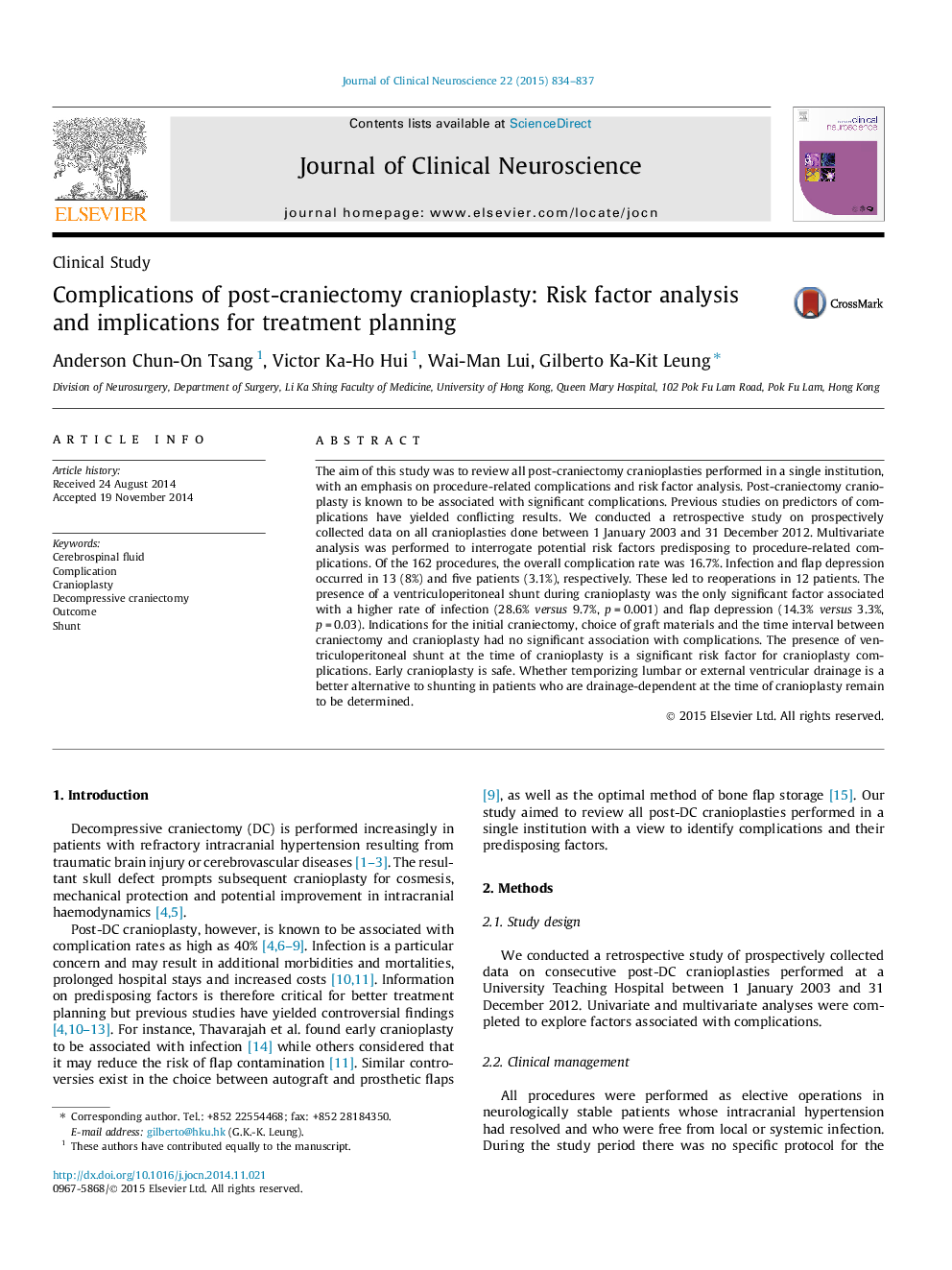| Article ID | Journal | Published Year | Pages | File Type |
|---|---|---|---|---|
| 3059282 | Journal of Clinical Neuroscience | 2015 | 4 Pages |
The aim of this study was to review all post-craniectomy cranioplasties performed in a single institution, with an emphasis on procedure-related complications and risk factor analysis. Post-craniectomy cranioplasty is known to be associated with significant complications. Previous studies on predictors of complications have yielded conflicting results. We conducted a retrospective study on prospectively collected data on all cranioplasties done between 1 January 2003 and 31 December 2012. Multivariate analysis was performed to interrogate potential risk factors predisposing to procedure-related complications. Of the 162 procedures, the overall complication rate was 16.7%. Infection and flap depression occurred in 13 (8%) and five patients (3.1%), respectively. These led to reoperations in 12 patients. The presence of a ventriculoperitoneal shunt during cranioplasty was the only significant factor associated with a higher rate of infection (28.6% versus 9.7%, p = 0.001) and flap depression (14.3% versus 3.3%, p = 0.03). Indications for the initial craniectomy, choice of graft materials and the time interval between craniectomy and cranioplasty had no significant association with complications. The presence of ventriculoperitoneal shunt at the time of cranioplasty is a significant risk factor for cranioplasty complications. Early cranioplasty is safe. Whether temporizing lumbar or external ventricular drainage is a better alternative to shunting in patients who are drainage-dependent at the time of cranioplasty remain to be determined.
